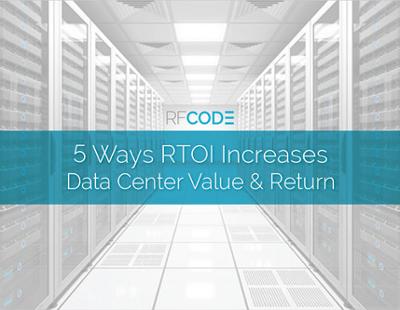Further expanding on our new eBook, 5 Ways RTOI Increases Data Center Value & Return, this second piece in the blog series takes a closer look at increasing efficiency and accountability in the data center.
There are several technology trends that have been making profound changes in both our professional and personal lives: Mobile access to sites and services, migration to the Cloud, the advent and utilization of “Big Data,” and the proliferation of the Internet of Things (IoT). While a diverse set of concepts, they share one basic unifying trait: all live on a server somewhere. To help ensure operational efficiency, executives need to know where each server is, what type of server it is, what the current environmental conditions are that surround the server(s), and how they are being used. This is the ideal, but in practice most data centers lack visibility into some (or all) of these key questions.
 The result? Millions of dollars of waste every year.
The result? Millions of dollars of waste every year.
Unlike manual asset management processes, Real-Time Operational Intelligence (RTOI) delivers the continuous, accurate asset information you need to ensure savings. A business concept that is quickly taking root in the technology industry, RTOI allows companies to take incredibly large amounts of data and quickly convert it into informed and intelligent actions. This allows for many benefits: immediate response to potential threats before they can cause downtime, ongoing improvements made to increase optimization (with low staff hours needed for tasks like data analysis), and the ability to take vast amounts of data and funnel them through one channel for ease of interpretation. When data centers take an RTOI approach to measuring their performance, operators always know where their assets are, if they are deployed and delivering value, and the environmental factors that are impacting the functionality and value of each asset.
With RTOI, environmental monitoring also goes beyond the important task of protecting assets. As the acronym hints, RTOI can also be used to determine the rack-level environmental conditions in real-time. This can be instrumental in assisting with critical tasks like SLA compliance and ensuring optimal power usage, helping to eliminate wasted energy in expensive areas like over-cooling. As an additional benefit, these systems easily integrate with ITSM platforms as well – ensuring automated responses even if environmental conditions degrade.
Want to learn more? Download our new eBook today!




